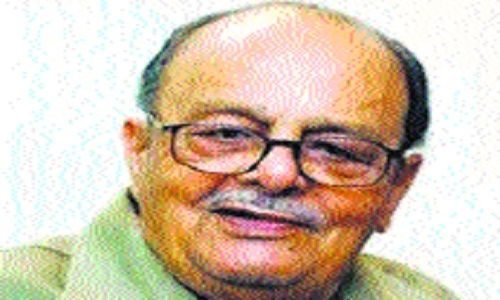Why Dalda plant in MP holds socio-political importance
| Date :21-Sep-2022 |

By Bhavana
‘Aparajita’ Shukla
On Tuesday, the Cabinet meeting gave green signal to the disposal of Co-operative Department’s Dalda Factory assets. The Council of Ministers decided to get the sale contract proceedings executed by the Joint Commissioner Co-operative, the liquidator of the State Oilseed Producer Co-operative Federation.
A Rs 9 crore plant which was supposed to use soya oil to manufacture vanaspati, is not merely a unit. Today, the matter of selling of Dalda was tabled in Cabinet and became a centre point in industrial and political circles. Why?
Industry was established in Churhat, home town and constituency of former Chief Minister late Arjun Singh. He was stalwart leader and known Congress veteran. Previously, it was planned to develop the complex at Sehore only.
The National Co-operative Development Corporation (NCDC), which was also funding the project, its board of directors approved of the Sehore project as per the reports.But suddenly, a report came in NCDC Board of Directors meeting, the report suggests that Churhat was found to be fitted the bill. At last, it was decided to bring the project at this place.
The most interesting aspect of the project is that Churhat is nowhere near the soyabean growing area at all. Despite, all odds the industry was erected in the State’s north-eastern district of Sidhi after a very curious set of decisions.
The State produces about three-fourths of the country’s soyabean crop. But the oilseed thrives mainly in about a dozen districts of western Madhya Pradesh which have black soil. These districts produce about 85 per cent of the State’s output.
The Soybean Processors Association of India, popularly known as SOPA, is the only national-level body representing the soybean processors, farmers, exporters and brokers in India working towards the aim to strengthen soybeans as a viable crop. The SOPA is situated in Malwa at Indore. The choice of Churhat which lies in the opposite part of the State is particularly strange in a state where distances and communications pose major problems. it amounts to an open invitation to trouble. which will give additional burden to cost of transporting. But there was an important condition. They wanted the State Government to pay Rs 1.30 crore, the extra cost involved in putting up the plant in Churhat.
One of the major arguments for Churhat was that if the unit is set up in Sidhi, a ‘no industry’ district declared by the Union Government, it will bring a ‘pioneer industrial subsidy’ of Rs 40 lakh. The Sehore site, on the other hand, would get a state investment of only Rs 12 lakh. The other argument is that locating the plant in Sidhi would entail sales tax exemption for nine years whereas in Sehore, it would mean only four years.
In 1977, he was elected from Churhat and became the Leader of Opposition in the Madhya Pradesh Legislative Assembly. In 1980, when INC achieved a simple majority in the Assembly, he won from Churhat and became the Chief Minister of Madhya Pradesh, despite the presence of strong contenders such as Sethi, Vidya Charan Shukla and Shiv Bhanu Singh Solanki.
Needless to mention that former CM Late Arjun Singh was not only a politician who passage influence at Delhi at the same he was also a charismatic figure and had stronghold in Sidhi district.
He was a mass leader also and successfully transformed the fortune of the millions of people in this region via this project. Which has also gave mileage to his political and social journey.